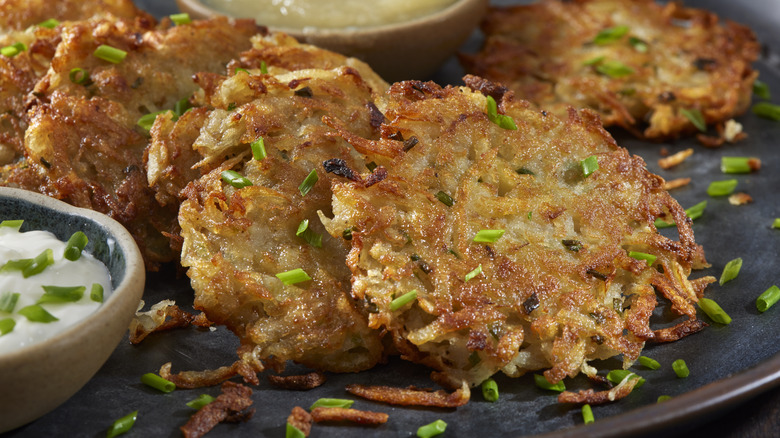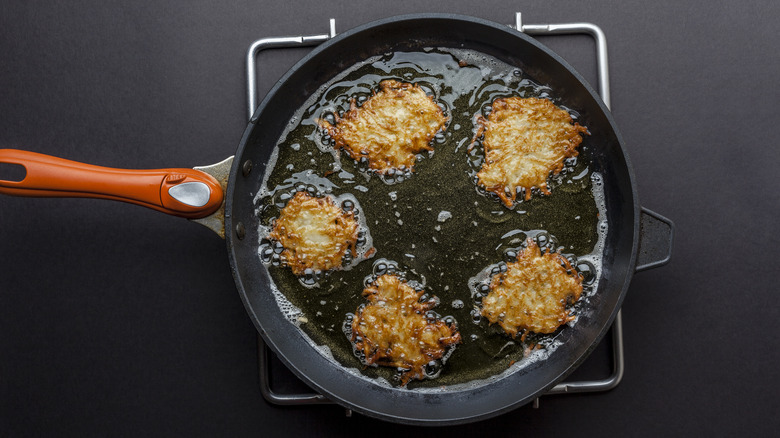Memorize This Tip For Perfect-Sized Latkes That Are Always Cooked Right
Latkes are deliciously comforting fried potato pancakes and a symbolic Hanukkah food many households make to feed a crowd of hungry guests. Like other dishes made in multiples, the size of your latkes matters. Not only do you want each latke to be roughly the same size, but they must all be the right hand-held size for successful execution. While you might be tempted to make giant latkes to match the size of your craving for their once-a-year occasion, the key to perfectly cooked latkes is to make them smaller.
What we love about latkes, other than their earthy and aromatic flavor, is their crispy outer layer and pillowy, chewy interior. As the description of potato pancake suggests, latkes are fried in half an inch of oil in a skillet and flipped halfway through. An oversized latke is harder to flip, and, more importantly, is less likely to cook evenly. A larger volume of potato requires a much longer cooking time than it'll take to crisp the edges. So, if you try to fry a large latke, you'll most likely end up burning the exterior waiting for the interior to cook. On the other hand, if you try cooking a large latke lower and slower, it'll absorb too much oil and become soggy.
By keeping latkes small, you'll align the crisping and cooking times perfectly, resulting in that beloved textural contrast. Plus, you can fit numerous small latkes in each frying batch, facilitating mass production.
Tips for latke sizing and frying
The ideal size for classic potato latkes is between three tablespoons and one-quarter of a cup of batter. Use a measuring cup or spoon to measure the latke batter, forming it into a loosely cohesive mound to dollop in the sizzling oil. Some recipes specify size in dimensions, roughly four inches wide and one inch thick. Whatever you choose, ensure you do the same for each one.
To prevent sogginess, ensure that the latkes aren't touching. Just as overcrowding a pan will ruin cuts of meat, overcrowding latkes won't give them the space for air to circulate their edges, thereby trapping steam that should evaporate as they fry. Also, too many in the pan will cause the oil temperature to drop; another cause of saturated latkes.
Before you even place your latkes in the frying pan, the most important step to ensure a crispy, never-soggy result is to strain the potatoes and onions of all excess liquid. Both onions and potatoes contain water, so once shredded, squeeze them thoroughly in a cheesecloth or tea towel to get rid of the water. While you don't want sogginess, you also don't need to let the starchy water go to waste, either. A pro tip is to reserve a little of the starch to add to the batter along with the matzo meal right before frying. This can ensure that you get a shatteringly crispy latke crust. You could also add store-bought dried potato starch.

